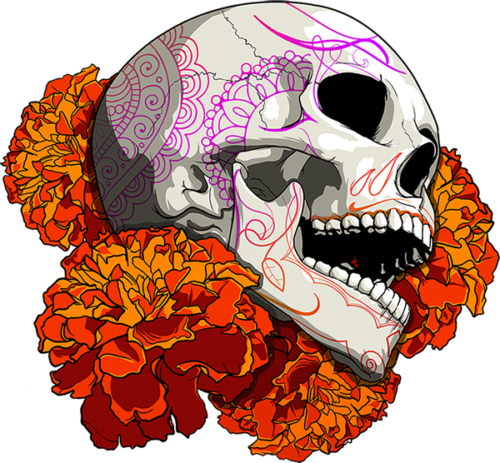

All of these things give it its characteristic flavor. Now, this last bit, whether it has actual basis on Pre-Columbine tradition is something that almost every Mexican would be able to identify as the purpose of the ofrenda. The significance of the ofrenda, is that it is left for the souls of the deceased to come back and be able to enjoy their worldly pleasures once more. It is these elements that give the ofrenda its meaning. While the Day of the Dead is probably most accurately defined as a special kind of All Souls’ Day festivity, it still has some elements that are not standard Christian doctrine. Yet, whether real or imagined, the ways in which the celebration is described as descended from Pre-Hispanic rituals has definitely colored the way it is celebrated. Research does suggest that the Mesoamerican to present-day continuity is a somewhat imagined one. It is in this particular aspect of the Day of the Dead that most of the Pre-Hispanic influence is found in the popular imagination.

Now, regardless of how the ofrenda came to be, it is, at its most basic, an offering of food to a deceased person, often a loved one.

The fact that no other nation seems to celebrate All Souls’ Day in such a grandiose manner gives credence to this story. While it is important to be clear on the facts, it should also be noted that, in a very real sense, whether the Mesoamerican origins are authentic or not, this seems to be the story that has stuck in the popular imagination. All of this casts doubt on how much we can actually know about the practices of that period and therefore how much of the possible Pre-Columbine origins of the holiday can be traced. This was often the reason that the research was being carried out, and the writings served as a tool for that purpose. So even when they tried to be accurate, and many of them like Fray Bernardino de Sahagún certainly did, we must not lose sight of the fact that the practices and traditions that they were seeking to understand, were the same ones that they were trying to eradicate. A great deal of these chroniclers were Catholic priests tasked with bringing the natives into their faith. Nonetheless, these apparent parallels seem to have been used to retroactively identify an origin story that not is probably not there.įinally, it is important to keep in mind that a lot of what we know about the practices of the native population in what is now Mexico comes from chronicles written by the Spaniards at their arrival and during the conquest of the Aztec Empire and other Mesoamerican civilizations. But this was not a universal practice, as not every dead individual was necessarily the subject of these offerings, and the figures had very different roles than the ones they have today, even the dates on which this happened was different from the modern holiday. The Aztecs did actually, for example, make food offerings to the deceased, and even crafted figurines sculpted from food as representations of the dead to which the offerings were then made. Those have been retroactively identified as sources for the contemporary celebration.

Instead, it seems that many of the native cultures in what is modern-day Mexico, and in particular the Aztecs, had practices that in many ways resemble some staples of the Day of the Dead and the ofrenda in particular as we know them today. The reason it is not a clear cut story is that the standard narrative that the Day of the Dead has its origins in particular Mesoamerican celebrations (Aztec, to use one example) has little evidence behind it. But where those influences came from and how they got there is not as straightforward as one might think, and that makes the ofrenda the way it is in many ways. Scholarly research suggests that the modern celebration is essentially the Catholic holiday with a bit of a Pre-Columbine façade. Celebrated around November 2nd, it coincides with the Christian All Souls’ Day. In many ways, the Day of the Dead is the quintessential Mexican holiday because it seems to blend European Catholic traditions with Pre-Hispanic Mesoamerican influences more clearly than other festivities. Because of this, in order to really understand what it is about it is helpful to know a little about the meaning and the significance of the whole celebration. In many ways the ofrenda is what the whole celebration is about. While the most easily recognizable aspects are probably the various representations of skulls and skeletons, the one that holds the most meaning for those celebrating is the altar, or ofrenda in Spanish. The Day of the Dead (“Día de Muertos” in Spanish, not “Día de los Muertos”) is one of the most ubiquitous traditions of Mexican culture.


 0 kommentar(er)
0 kommentar(er)
